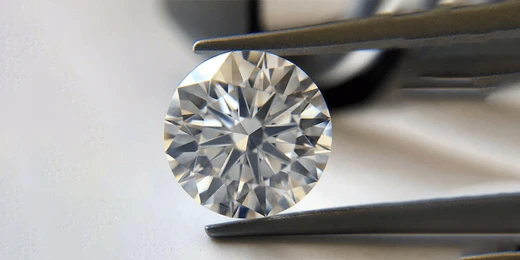Understanding the Factors that Influence Diamond Pricing

Understanding the Factors that Influence Diamond Pricing
Diamonds, often celebrated as symbols of beauty, love, and commitment, are also known for their hefty price tags. The price of a diamond is influenced by a myriad of factors, each contributing to its final market value. The most crucial of these is often encapsulated in the four Cs: Carat, Cut, Color, and Clarity. Beyond these, other elements such as certification, the diamond's shape, and market demand also play significant roles. This article will delve into each of these factors, providing insights into why diamonds are priced the way they are.
Carat Weight
The carat weight of a diamond is perhaps the most straightforward factor affecting its price. One carat is equivalent to 0.2 grams, and as the weight increases, so does the price, often exponentially. This price jump is due to the rarity of larger diamonds compared to smaller ones. However, two diamonds of the same weight can have very different prices based on other quality aspects.
Cut Quality
Arguably, the cut is the factor that most significantly impacts a diamond's beauty and, subsequently, its price. A well-cut diamond will exhibit superior brilliance, sparkle, and fire, making it highly desirable and more expensive. The precision of the cut affects how light is reflected within the diamond, contributing to its overall appearance. Cuts are graded from Excellent to Poor, and diamonds with higher cut grades command higher prices.
Color
Diamond color is another critical factor, with the grading scale starting at D (colorless) and moving down to Z (light color). Colorless diamonds are the rarest and, therefore, the most expensive. However, the value can also increase for diamonds at the other end of the scale if they exhibit unique or particularly desirable hues, such as pink or blue, which are considered fancy colors.
Clarity
Clarity refers to the absence of inclusions and blemishes in a diamond. The scale for clarity grades ranges from Flawless (no inclusions or blemishes visible under 10x magnification) to Included (inclusions and/or blemishes are obvious under 10x magnification). Higher clarity diamonds are rarer and command higher prices. However, many imperfections are microscopic and do not affect the diamond's beauty to the naked eye.
Shape and Certification
While not part of the four Cs, the shape of a diamond and its certification are significant influencers on its price. Rounds are the most popular and expensive due to their high demand and the amount of rough waste produced during cutting. Certification from reputable labs, like the Gemological Institute of America (GIA), provides an unbiased assessment of the diamond's quality, increasing buyer confidence and, consequently, value.
Market Demand and Rarity
- Market Demand: Demand for diamonds fluctuates based on economic conditions, trends, and consumer preferences. For example, engagement rings remain a steady market, maintaining demand for certain types and sizes of diamonds.
- Rarity: Diamonds that are rare in color, size, or quality naturally carry a premium price. Exceptional diamonds, such as those of significant size or unique color, can fetch astronomical prices.
Additional Elements Influencing Diamond Pricing
- Fluorescence: Some diamonds exhibit fluorescence when exposed to ultraviolet light. While this can be a desirable trait, intense fluorescence can negatively impact a diamond's appearance and its price.
- Brand: Like any high-value item, the brand behind a diamond can influence its price. Renowned brands can command higher prices due to their perceived higher quality and prestige.
- Environmental and Ethical Considerations: There is a growing segment of consumers willing to pay a premium for diamonds sourced in an environmentally and socially responsible manner. This trend is leading to an increased valuation of ethically sourced stones.
In conclusion, the pricing of a diamond is a complex interplay of factors, with the four Cs—carat, cut, color, and clarity—being the primary determinants. However, other considerations such as certification, shape, market demand, rarity, and even brand reputation must not be underestimated. Understanding these influencing factors allows buyers to make well-informed decisions, ensuring they get the best value for their investment. Whether you're buying a diamond as a gift, an investment, or a symbol of love, knowledge of these elements will serve as a invaluable tool in navigating the sparkling world of diamond purchasing.